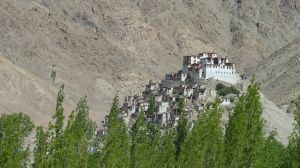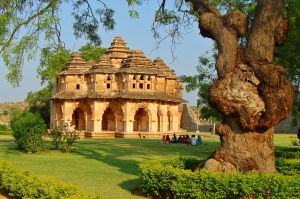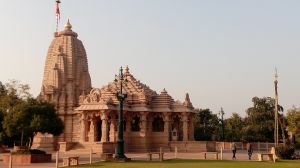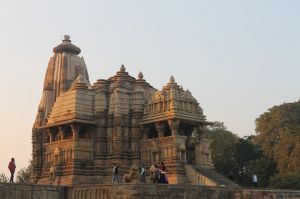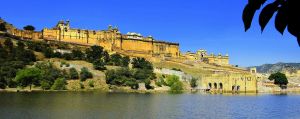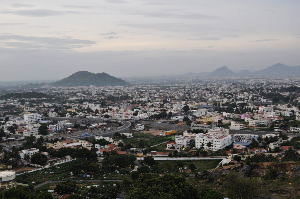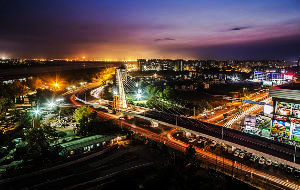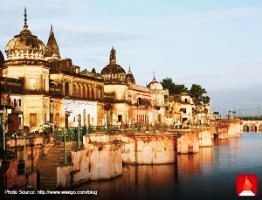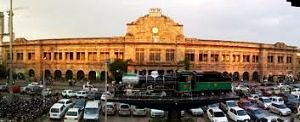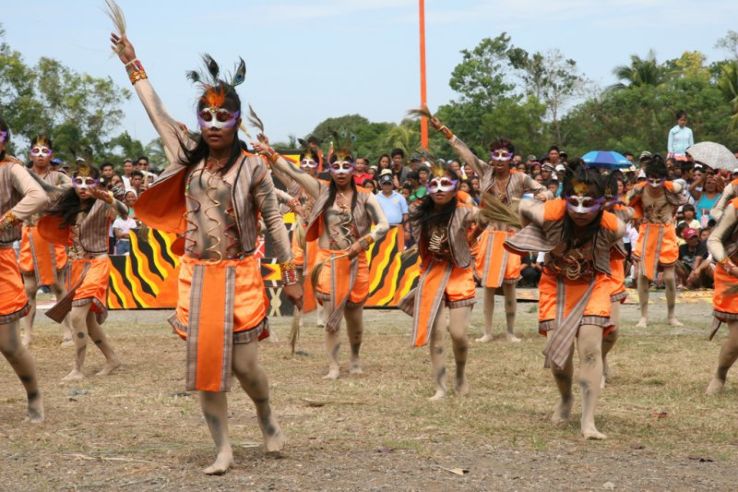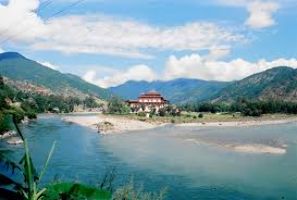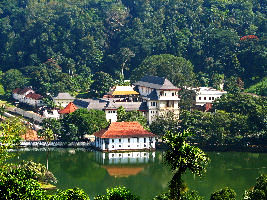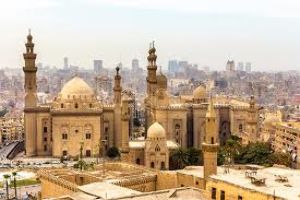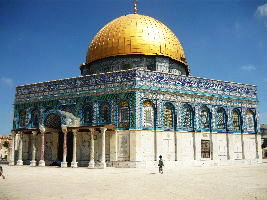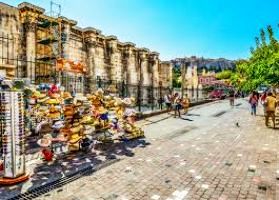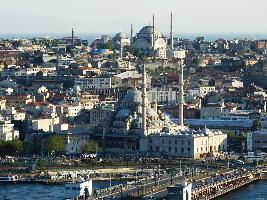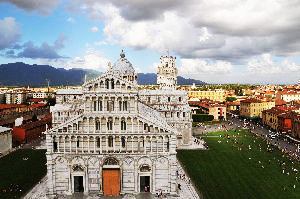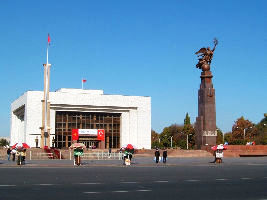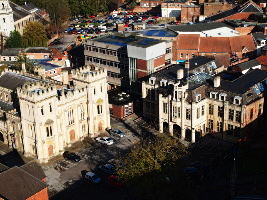- Log in
- Enquiry Form
To City (Destination)
From City
Travel Date
Travel Duration (In Days)
Adult
Child
Infant
Travel With
Hotel
Rooms
Type of Trip
Total Budget (in INR)
Ticket Booked ?
Ticket Required?
Mode of Transport
Ticket Category
I will book
Date of Birth
Gender
Marital Status
Income (Per Month)
Nationality
Preferred Language
Total countries visited so far
Do you have a Visa ?
Do you have a Passport?
Preferred Time to Call
We have identified additional inquiries related to your tour. Please review them and let us know if there are any inquiries you would like us to remove.
- Home
- India
- Royal Rajasthan Tours
- About Culture
Royal Rajasthan Culture Tour Packages
Trending Culture Destinations
Similar Culture Places in India
Similar Culture Places Outside India
Royal Rajasthan Culture Trip Ideas and Stories
Navratri and Durga Puja are two of the longest-celebrated Hindu festivals. While both have different cultural and regional variations, they both have a theme of the victory of good over evil and the worship of Goddess Shakti. Navratri is dedicated to the worship of Durga in her various forms. It spans nine nights and is divided into three sets of three days each, throughout which different facets of the goddess are worshipped. History of Navratri and Durga Puja Several myths and legends are associated with celebrating this Navratri Festival. According to a legend, Mahishasura, the demon, worshipped Shiva and obtained the boon of eternity. So, he started harassing people and set out to win seven Lokas. Intimated by his power, all the Devas requested Shiva to tame the demon. Then Brahma, Vishnu, and Shiva united their powers and created Goddess Durga. Mahishasura was mesmerized by her beauty and approached her for marriage. Goddess Durga said that the demon Mahishasura should win over her in a duel. The duel continued for 9 nights, and at the end of the 9th night, Goddess Durga killed the demon. So, the nine nights are called Navratri. The tenth day is celebrated as Vijayadashmi or Dusshera. Another legend states that King Daksha had a beautiful daughter, Uma, who wanted to marry Lord Shiva. So, she worshipped Shiva and pleased him. Shiva married her. Once, she visited her parents in a Yagna. Here, Daksha insulted Shiva, and Uma jumped into the agnikund. Hereafter, she was known as Sati. Sati was reborn, and peace was restored between her and her parents. Then, she married Shiva again. It is believed that the goddess came to stay with her parents for nine days. if you want to know about the dates of the Navratri or Durga Puja, know it here In ancient times, Kshatriyas barred themselves from participating in any war during the monsoon. After the monsoons passed, they started afresh with wars. So, before their war journey, these Kshatriyas worshipped different forms of Devi for nine days, which is celebrated as Navratri. Another legend states that Lord Rama, who wanted to release Sita from Ravana's clutches, prayed to Goddess Durga for nine nights to gather the strength to kill Ravana. Those nine nights were known as Navratri. On the tenth day, Ravana was killed, and that day is called Vijayadashmi or Dusshera. Navratri and the 9 Goddesses During Navaratri, Goddess Durga is worshipped in nine forms. All the forms signify strength, power, bravery, beauty, grace, knowledge, and auspiciousness. These forms of Durga are worshipped for nine days.
India has always been known for its unity in diversity, and if a live example of this is to be seen, look at the diversity in the food culture of India. Whether you are an Indian or a foreign tourist, these 15 places are a paradise for food lovers. Every state has some delectable food, and every dish tells a story. So, let us dive into the world of food and stories.
Lord Shiva, revered worldwide, is enshrined in the ling gorm called Shivalingam or Jyotirlingas, a powerful union of Shakti and Shiva. With its rich cultural heritage and temples, India is home to 12 Jyotirlingas, each steeped in historical and mythological significance. These sacred shrines, particularly in the month of Saavan, invite us to delve into their intriguing historical and mythological context. Let's explore the unique stories behind each of these jyotirlingas, one by one, in this blog.
The journey of peace and wisdom culminates at the Chaumukhnath temple, one of the India’s oldest temples. This ancient Hindu temple, dating back to the 10th century, was erected by the Pratihara Dynasty in the Nachna District of Madhya Pradesh and has served as a beacon of spiritual enlightenment for centuries. One of the oldest temple's architecture was inspired by the north Indian Nagara style of temple architecture, which is characterized by its tall and curvilinear spine, multiple entrances, and intricate carvings. The Chaumukhnath temple stands out with its unique 'Chamukh' design, a four-faced 'structure' that symbolizes the power of Lord Shiva as the protector of the Universe. Each face leads to a separate chamber, housing a Lord Shiva lingam. The walls of the temple are adorned with intricate carvings, a testament to the temple's beautiful architecture. The intricate carvings representing various scenes from Hindu mythology, such as Lord Shiva, Parvati, Vishu, Laxmi, and gods and goddesses, enhance the beauty of the temple. Moreover, the beautiful sculptures of elephants, lions, and other animals add more splendour to the temple's beauty. The Chaumukhnath temple is not just a place of worship but a vibrant hub of cultural celebrations. The grand MahaShivaratri festival is celebrated with enthusiasm and devotion. It attracts devotees from all corners of the country, making it a significant destination for visitors seeking to immerse themselves in India's rich religious traditions. Furthermore, ChaumukhNath temple is one of the oldest Hindu temples in India and is a great example of the country's rich cultural heritage. This beautiful temple has become popular among tourists looking to explore the country's rich cultural heritage for years. Its unique design, intricate carvings, importance in mythology, and much more make it one of the must-visit destinations in India.
The inauguration of the Ram Mandir has been the headline of all news sources, and the hype and excitement people have for the temple is just incredible. But in all this noise, the essential details have been missing. There is so much news about Ram Mandir, yet many people aren't aware of how to reach Ram Janmabhoomi, what the aarti timings are, and much more. There are details available on different platforms, but they are all scattered. We have done the job of sewing together all the important details you should know. The Ram Mandir in Ayodhya will be consecrated on 22nd January 2023. Millions of people want to visit the place but are confused because of the excessive noise and lack of accurate information. Here are all the details regarding the Ram Mandir to keep you informed.
The moment we hear the word Ayodhya, the first thought in our mind is of the legendary Ram Mandir that will be consecrated on 22nd January 2024. Everyone is quite excited about the Pran Pratishtha, and we all cannot wait to visit the sacred temple. The thing that we miss sometimes is that other than the Ram mandir, Ayodhya is also blessed with various other places that embrace your visit and will leave you amazed. Visiting Ayodhya is a massive moment in anyone's life as it is not just a trip but a pilgrimage. You can enjoy your trip to Ayodhya by visiting the Ram Mandir, but Ayodhya has much more to offer, and you can enjoy the journey to the fullest by visiting other remarkable places in Ayodhya. Ram Mandir is always going to be in our travel itinerary to Ayodhya, but here are some must-visit places in Ayodhya that you cannot miss out on:
With over a century consumed in legal disputes, Ayodhya's Ram mandir has to be one of India's longest-running legal conflicts that came to an end in 2019 with the Supreme Court's verdict. Now that the Prana Pratishta of Ram mandir is near it is crucial to have look back at the long legal journey the temple has to go through. The whole dispute that spanned for centuries was for the land dispute. The area was considered Ram Janmabhoomi the place where Ram was born, and it has been in constant debate. The conflict goes back as far as 1855, when religious violence occurred in Ayodhya. The intricate and complex legal battle can be understood with the below event-by-event timeline.
The Ram Mandir in Ayodhya has to be one of the most historical and influential religious places in the world. Ayodhya is significant for every devotee of the Hindu religion as it is considered the birthplace of the Hindu God, Lord Ram. The place is the nation's heartbeat and, for centuries, has been the talking point in the country. According to the Hindu Granth Ramayana, Lord Rama was born in Ayodhya to Raja Dasharatha and Kaushalya. The influence and teachings of Lord Rama have been so significant that for every Hindu, the birthplace of Lord Rama is a sacred place. But history hasn't been kind, as the Ram Mandir in Ayodhya has been a controversial issue for centuries. The Ram Janm Bhoomi Birthplace is the place where the temple is being made, and the wishes of millions of people have come true as the temple is finally created, but we cannot forget the vast history of the place. To understand the joy and celebrations of the inauguration of Ram Mandir, it is crucial that we first understand its incredible history.
The sacred Ram Mandir in Ayodhya has become the talking point of the nation as its consecration ceremony, or Pran Pratishda, is near. On 22nd January 2024, the auspicious Ram Mandir temple will be inaugurated, which is a massive moment in Indian history as it has been a controversial legal issue for more than three centuries. The sacred Ram Mandir in Ayodhya has become the talking point of the nation as its consecration ceremony, or Pran Pratishda, is near. On 22nd January 2024, the auspicious Ram Mandir temple will be inaugurated, which is a massive moment in Indian history as it has been a controversial legal issue for more than three centuries. Whenever we see the news of Ram Mandir on the news, we get awestruck by the magnificent architecture and the attention to detail. The temple is a great example of modern architecture combined with traditions, as various elements used in the temple's construction have come from different places in the country. There is a religious reason and story for every element that is involved in the construction of the Ram temple, whether it is the stone used in the construction or, the wood, or even the rice that will be part of the Prasad in the inauguration ceremony. If this doesn't amaze you, I don't know what will. The architecture of the iconic temple is breathtaking, and one cannot help but look at the gorgeous photos of the temple to explore the architecture. If the architectural nerd in you cannot wait to visit the temple, then you aren't alone, as millions of people want to visit the temple. Here are the basic details of the temple's architecture. Particulars Details Total Area 2.7 Acres Total Built-up Area 57,400 Sq. ft. Style Of Architecture Gurjara-Chaulukya style of Nagara style architecture Total length of the temple 360 feet Total width of the temple 235 feet Total height of the temple including peak 161 feet Total number of floors 3 Height of each floor 20 feet Number of columns in the ground floor 160 Number of columns in the first floor 132 Number of columns in the second floor 74 Number of pedks and pavilion in the temple 5 Number of Gates in the Temple 12 The enormous temple will be the 3rd largest Hindu temple in the world. The magnificent architecture of this temple has been done after the involvement of various educational and research institutes like Central Building Research Institute, National Geophysical Research Institute, IIT Bombay, IIT Guwahati, and IIT Madras. More than 4,000 workers were employed in the construction of the temple. Artisans, sculptors, and stone carvers from all parts of the country were hired to showcase their craftsmanship. The temple has done the task of uniting the country as various states have provided their popular construction materials. The construction and design of the temple are done by Larsen & Toubro, with Tata Consulting Engineers being the project manager consultant for the construction of the temple.
Discover the extensive history of the Ram Mandir in Ayodhya, tracing its roots from 1528 to 2024. From its origins to the present day, witness the journey of this iconic temple dedicated to Lord Ram. Dive into historical events, controversies, and the significant milestones that shaped the Ram Mandir's narrative over the centuries. If you are keen to know about the complete journey of the temple, you are at the right place, as you will get to know everything about the sacred Ram Mandir. Fasten your seat belts as we are going on a journey of Ayodhya and the legacy of Ram Mandir. Want to travel to Ayodhya? We have got you covered. You can explore all the travel details to Ayodhya on this page.
Tucked away in a corner of Old Delhi is a market of winding alleys, ancient crumbling Persian motifs, whiffs of oriental spices, splattered with the vibrant colours of India. In aspiration, it has the stature of the grand bazars of the great Ottoman Empire. This is Chandini Chowk, which was first established by Mughal Emperor’s daughter Jahanara. The market was divided by canals, which were meant to reflect the moon. This city, and the market’s reputation for the finest of silver, gave it the name of Chandini Chowk. Today, India’s many cultures, religious identities, and histories find their home in its twenty-first century edifice.
Few Hollywood musicals have resonated through the world like The Sound of Music. Based on the true story of the Trapp Family Singers in Austria, and made famous in the biography of Maria Von Trapp, The Sound of Music was filmed in Salzburg. Yet while it does not have a large following in Austria, it is this film that has put the historic city of Salzburg on the bucket list of travellers from around the world. Of course, most Austrians would simply prefer for this to be known as the home of Mozart. But if you are one of those who first discovered Austria through your love for The Sound of Music, here are seven sights you must see on your visit to Salzburg.
By the age of 25, I – perhaps matching the average Indian – had visited, as far as my memory goes, at least 10 historical forts. That was ten opportunities to witness the Archaeological Survey of India’s devotion to disrepair. At least ten exposures to guides who promised to transport the tourist to the courtroom of that great historical figure who once ruled these ramparts. Perhaps ten decent vistas into the surrounding countryside. And around a hundred glorious declarations of unrequited love, etched into sooty walls by perpetually-adolescent males. With this air of cynicism and condescension, I begin exploring the Madikeri Fort and find most of my assumed template missing. The Karnataka government’s archaeological office is locked on the morning of my visit and will stay locked the whole day according to the security guard. The vistas overlooking the town are unimpressive; and the mandatory tourist guide, who might help me make sense of the place, is conspicuously absent. I will discover these aspects soon. For the first two minutes, everything is as expected. The high archway through which I enter leads to a customary series of 90 degree turns – I suppose these eliminated the possibility of charging elephants during battle. And then, just like that, I see a temple. Not an ancient shrine, mind you. The sanctum sanctorum appears to be housed inside an old stone structure, but the painted façade and sheet roofing at the entrance belong to the computer age. The coexistence of two different eras piques my interest. I sidestep the temple, walk through a nondescript arch and enter an expansive area dotted with many buildings whose architecture cannot be attributed to Tipu Sultan. At first glance, they look British and impressive. The closer I walk to the largest building, however, the less impressive it becomes. Untidy scaffolding seems to be holding the building in place. At least the clock in the tower seems to be working, I think, till the security guard reminds me that even a broken clock is correct twice a day. Till 2019, this building was the Deputy Commissioner’s office and, according to a rudimentary internet search, the location of the district treasury, home to a small portion of Mahatma Gandhi’s ashes for many decades. Yes, Kodagu is one of the many places in India and abroad which received his ashes. On the other side of the DC’s office stands the district courthouse, which is yet to be relocated. It is bustling with lawyers and feuding parties and looks no more remarkable than the average government building. The museum is far more interesting. I am usually flummoxed by the typical museum’s fixation on tools of war, but given the gallantry of the Kodavas, the exhibition of weaponry and plaques commemorating war heroes don’t feel out of place here. Exiting the museum, I wait patiently for cars visiting the courthouse to pass and then walk up a ramp leading to a pathway right next to the fort’s walls. The midmorning sun and the springtime freshness of the hill station make my walk enjoyable. From this vantage point of the premises, I see abandoned auto rickshaws, a volleyball court, a post-box, more buildings in advanced stages of decay and the famous life-size elephant statues that pose patiently with selfie-seekers. As I walk back to my hotel, I find my cynicism melting and begin to appreciate the uniqueness of the Madikeri Fort. Most Indian forts are in ruins, literally. This one is refreshingly different because it has been constantly repurposed ever since Muddu Raja, the 17th-century ruler of Kodagu, built a mud fort. As the fort came into the hands of Tipu Sultan, mud gave way to granite, which must have been transported here from far, on carts, through dusty uphill roads. Tipu’s exit ushered in an era of European-style buildings that have been treated like hand-me-down clothing in a poor household. - The former DC office was a palace built in 1814 by Lingarajendra Wodeyar II. - The museum used to be a Gothic church that was built at the same site as a Veerabhadra Temple. - A building in the lowest courtyard used to be a prison which was, for a period of time in the recent past, repurposed as an orphanage for girls. - And today, given the trail of cigarette butts and tetra packs of rum and whiskey strewn adjacent to the fort walls, the whole premises apparently gets transmogrified into a place for revelry in the night! Somehow, the fort has managed to balance legacy and functionality. That’s why the locals visit it as much as the tourists, if not more. But the exodus of government offices from these premises, which was hastened by a Karnataka High Court ruling, marks the end of an era when the buildings were alive and in use. In addition to the DC’s office and the Zilla Panchayat, the public library and the anti-corruption bureau have already been relocated. What will happen when the courthouse and the agriculture department follow suit? Will all the buildings turn into ruins? Or will Karnataka’s archaeological department successfully revamp the place and get it ready for a new era of history being repurposed?
In the course of its 500-year history, Bangalore has been known by many sobriquets. Among its most popular names in the 80s and early 90s was its boast of being India’s Garden City. It earned the name because of its world-renowned, spectacular gardens like Lal Bagh and Cubbon Park. In addition, most old Bangalore neighbourhoods were always planned with a park. But most uniquely, the city’s trees were planted using the distinctive concept of serial blooming. First introduced by the German botanist Gustav Hermann Krumbiegal, who was hired by Maharaja Krishnaraja Wodeyar as the economic botanist of Lal Bagh, the approach planned the trees that lined Bangalore’s avenues so that a new group of trees bloomed at a different time of the year. Chosen from around the world, but mainly from South America, these trees flowered in a serial fashion. So, no matter at what time of the year you visited, Bangalore was always blooming. Today, even while most Bangaloreans believe that the city’s transformation into India’s IT capital has cost it much of its tree cover, Bangalore remains a conspicuously green city. Its trees still bloom in a series throughout the year, but at no time is this more evident than in spring, between the months of March and April. Here are five trees that keep Bangalore India’s garden city.
Each year, sometime in March or February, Goa reverberates with the sound of the Goa Carnival. It is Goa’s celebration of Mardi Gras or Fat Tuesday. Like other global celebrations, including the famed Rio Carnival, the Goan celebration begins before Lent. It starts on the day of the Christian feast of the Epiphany and stops a day before Ash Wednesday, better known as Shrove Tuesday. In popular culture, this is Fat Tuesday or Mardi Gras in French as it marks the last day of feasting preceding the period of fasting during Lent. It is smaller than the celebrated Rio Carnival and Mardi Gras in New Orleans. But it is among the only such known celebrations in India and even Asia. The Goa Carnival also brings a special Indian flavour that succeeds in making it unique anywhere in the world. Its official colours are usually red and black. Here are eight unique faces that you will see only at the Goa Carnival.


